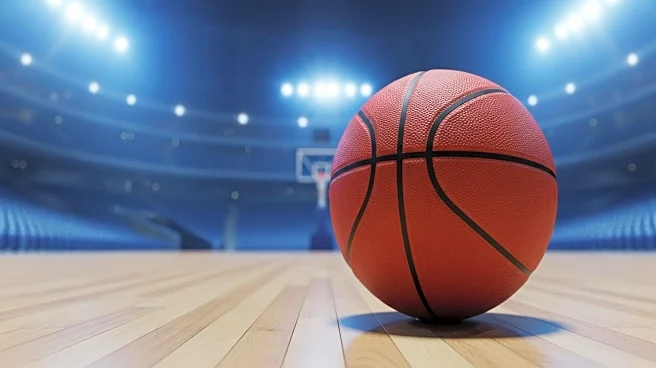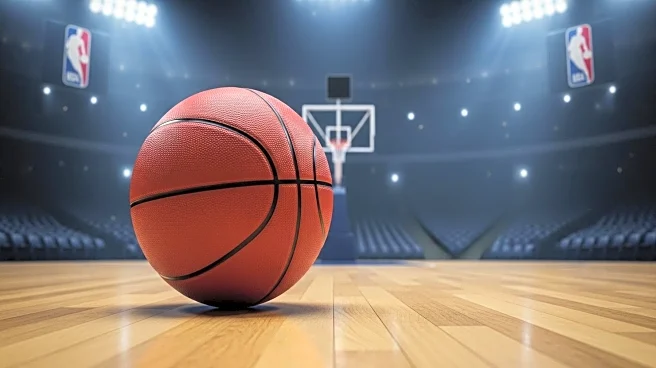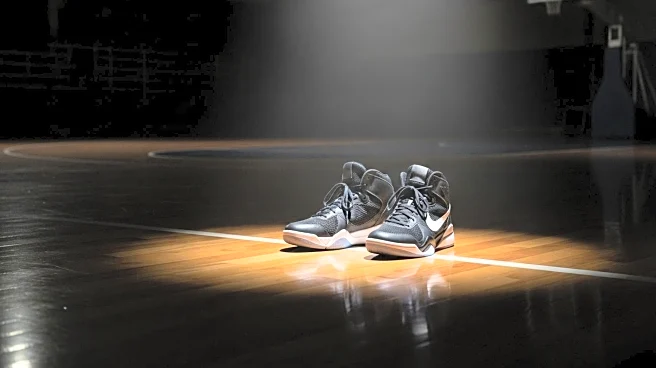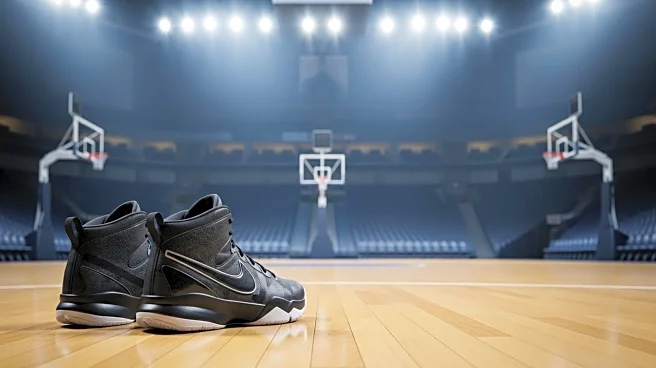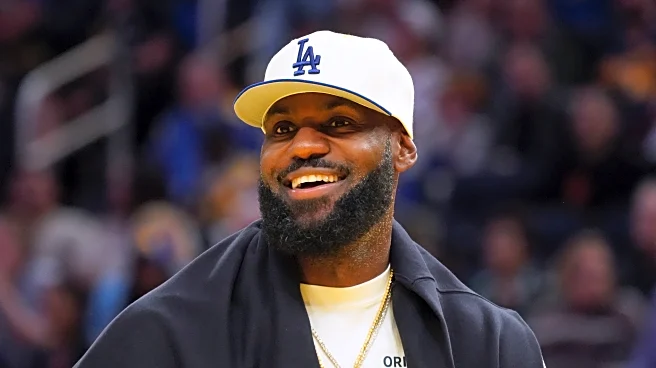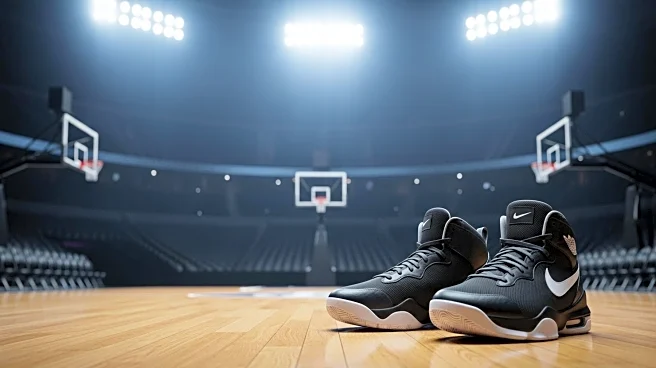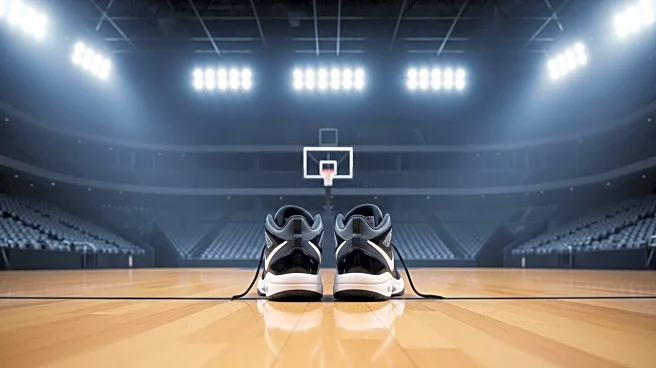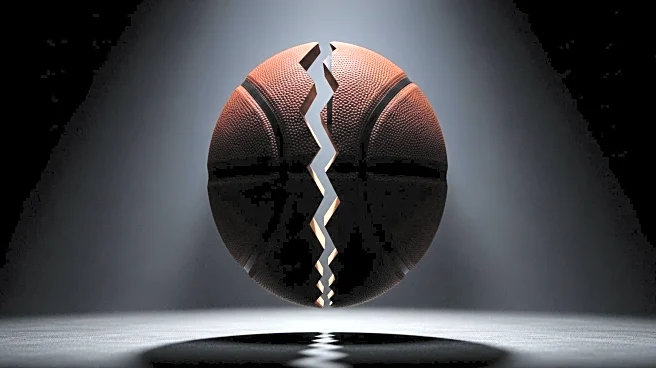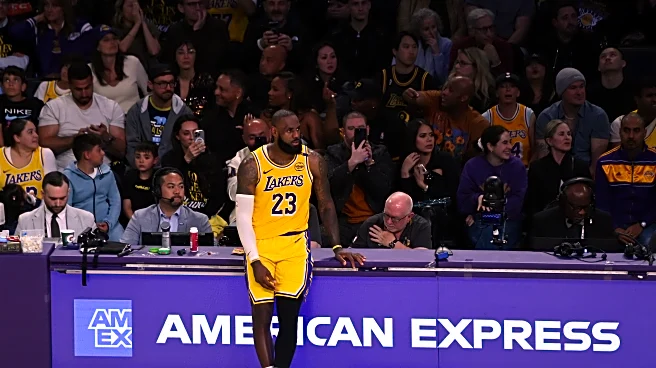What is the story about?
What's Happening?
LeBron James, the four-time NBA MVP, is set to miss the Los Angeles Lakers' season opener against the Golden State Warriors due to sciatica on his right side. This marks the first time in his career that James will be unavailable for a season opener. The injury is expected to sideline him for 3-4 weeks, potentially affecting his participation in nine regular-season games. Throughout his 22-year career, James has experienced various injuries, including a sprained finger, hamstring strain, and broken nose. His tenure with the Lakers has been particularly challenging, with significant absences due to groin and ankle injuries.
Why It's Important?
LeBron James' injury has substantial implications for the Lakers and the NBA. As a key player, his absence could impact the team's performance and strategic planning for the season. The Lakers may need to adjust their lineup and tactics to compensate for his absence, potentially affecting their competitive edge. James' health issues also highlight the physical demands of professional basketball and the challenges faced by aging athletes. His situation may influence discussions on player health management and the importance of rest and recovery in prolonging athletic careers.
What's Next?
LeBron James is expected to return by November 6, potentially missing several key games. The Lakers will need to navigate the early season without their star player, relying on other team members to step up. James' recovery will be closely monitored, with potential adjustments to his training and playing schedule to ensure a full recovery. The team's performance during his absence could influence their standing in the league and future strategic decisions.
Beyond the Headlines
James' injury situation raises broader questions about athlete health and longevity in professional sports. It underscores the need for effective injury prevention and management strategies, particularly for veteran players. The situation may prompt discussions on the balance between competitive success and player welfare, influencing future policies and practices in sports management.
AI Generated Content
Do you find this article useful?


